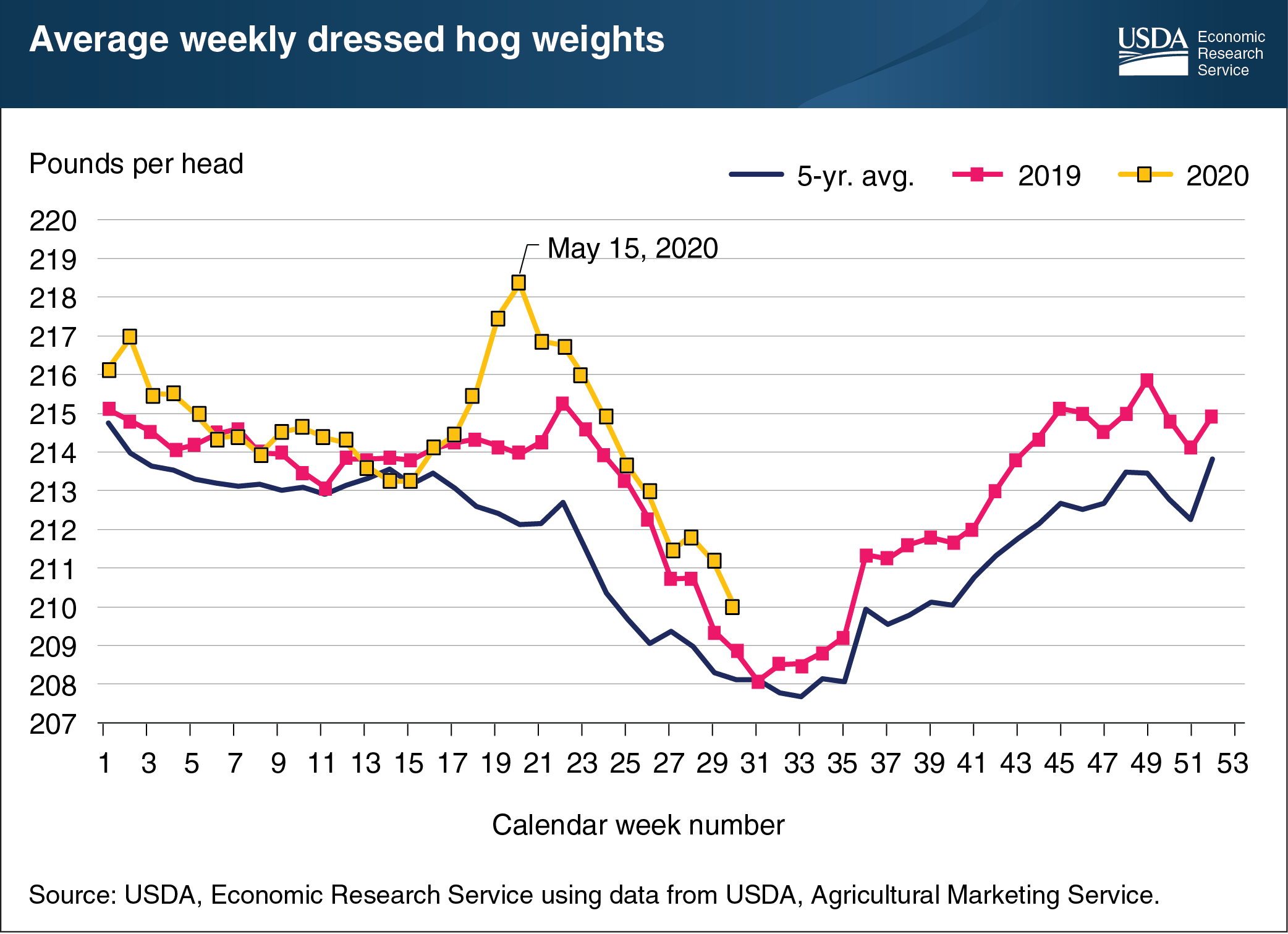Falling hog weights suggest the hog industry is managing supply-chain disruptions from COVID-19
- by Mildred Haley
- 8/3/2020

Falling slaughter weights of hogs suggest that the U.S. hog industry is managing the supply-chain consequences of COVID-19, with weights falling almost 4 percent since their peak during the week of May 15, 2020 (calendar week 20). Due to the pandemic’s spread to workers at pork processing facilities, slaughter schedules were postponed and/or reduced, causing market-ready animal back-ups in the tightly sequenced—but usually-smooth—operating process. There are indications that many producers have raised the ceilings on stocking rates of production buildings, meaning that more animals are stocked in barns than was the pre-COVID practice. Additionally, many animals have reportedly been placed on maintenance rations, diets relatively low in protein, which tends to slow weight gain. This is critical because conventional slaughter plants often experience safety and technical difficulties processing hogs weighing more than 300 pounds. These measures, together with higher summer temperatures—which tend to decrease swine appetites—and rebounding processing capacity utilization, have contributed to reducing the weekly average slaughter weights of federally inspected hogs from their May 15 peak. This chart is drawn from the Economic Research Service’s Livestock, Dairy, and Poultry Outlook from July 2020.

